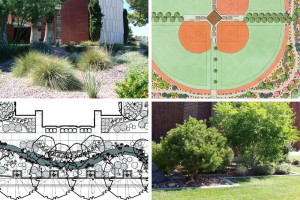The Single Strategy To Use For Landscape Design
The Single Strategy To Use For Landscape Design
Blog Article
Get This Report on Landscape Design
Table of ContentsFascination About Landscape DesignThe Basic Principles Of Landscape Design Facts About Landscape Design UncoveredThe Facts About Landscape Design Uncovered
Official design motif. Credit Scores: Gail Hansen, UF/IFAS The yard is an extension of the home where a variety of tasks take area. A lawn can typically be divided into 3 areas: public (the front backyard), personal (the back yard), and solution (usually the side backyard). The area of task locations depends largely on the sort of location, the dimension of area required, the kind of activity, and the preferred distance to various other tasks and structures (Landscape Design).
The outside wall surface of your home often acts as the initial wall surface or beginning point of an outdoor area. Incompatible usages must be separated, and related activities, such as food preparation and dining, must be assembled to make the yard extra effective and delightful. When utilizing hardscape to produce areas, utilize construction material comparable to that used in your house for continuity from your house into the garden.
Connected spaces. Credit History: Gail Hansen, UF/IFAS Utilizing comparable hardscape features and duplicating plants pulls the eye around the yard.
This gives a sense of enigma that promotes expedition and discovery of the landscape. From a design viewpoint, plant materials have 3 significant functions in the landscape: aesthetic, architectural and practical. Cosmetically, plants produce a visually pleasurable setting and structurally plants arrange and specify areas. Plants are practical because they can change the atmosphere for the convenience of the individual by modifying light, temperature level and humidity.
The Single Strategy To Use For Landscape Design
For mental convenience plants are made use of as physical or implied obstacles for privacy and safety. Physical obstacles block both the view and access to a space and include fencings, walls and plant bushes. Landscape Design. Suggested obstacles, commonly reduced growing plants, block accessibility yet not the view (Figure 9). Various other functions of plants consist of cleaning up the air, avoiding disintegration and dirt loss, maintaining wetness in the soil, and returning natural issue to the soil.
Physical and indicated obstacles. Credit: Gail Hansen, UF/IFAS For these reasons, the sorts of plants to be made use of (such as trees, shrubs, or groundcovers) need to be chosen in the onset of planning. Plant kinds are picked for their practical abilities to ensure that their future function and required space can be considered at the same time.
The overhanging plane, the vertical airplane and the ground plane need to all be taken into consideration to create room. When the shape of a plant bed has actually been developed, the plants must be massed (grouped) and layered to attain visual unity and the wanted amount of room. The size of a plant mass will rely on the overall dimension of the yard, the dimension of the individual plants in the mass, and the focus or impact preferred from the plant material.
Each plant mass is in front of, behind, or following to, an additional mass. Credit History: Gail Hansen, UF/IFAS Repeating plants within a mass and repeating masses with comparable plants connects the garden with each other. The private plant qualities should be thought about to successfully layer my explanation and mass plants.
Getting The Landscape Design To Work
All plant make-ups start with the primary framework plants, the big, mostly evergreen history plants-such as the trees and large hedges. These plants different or enframe rooms, manage the dimension of the room, and provide the starting point for choosing the suitable qualities of the second layer, midground plants, for massing and infill.
Crucial points in the yard should be highlighted by the use of distinct plants, distinct structures, or garden ornaments. Marking thresholds or entryways to spaces can be done with gateways, arbors, and actions, or via using special and colorful plants. The type and/or design motif of the yard will certainly typically assist establish the essential points and exactly how they need to be highlighted.
Various other essential locations in the yard are centerpieces, which is used to aesthetically organize a designed location. The kind of prime focus frequently depends upon the viewing perspective. Various perspectives or point of views can reveal different make-ups in the landscape that may call for a variety of focal points. Contrasting texture, shape, size and color will certainly capture and hold the eye.
The Facts About Landscape Design Revealed
Plant forms. Credit History: Gail Hansen, UF/IFAS After form, texture is the next dominant feature of a plant; coarse, medium and great structures can be made use of for contrast and emphasis in the landscape.


The enjoyable aroma of plants, the sound of wind in the trees, the noise and texture of water, and the colors and appearances of sculptures, pots and garden furnishings all contribute to the experience of the yard. One detail that is often forgotten is the impact of light on the aesthetic appeals of the plants.
The whole yard changes in function and appearance over the program of the day, and Read Full Report the program of a year, as the light and temperature level adjustment from early morning to night and season to season. Plant selection need to think about a plant's This Site growth price, its mature dimension and type, and the upkeep it will require.
It is important to recognize the ultimate fully grown dimension of plants so they can be placed in the right location and spaced appropriately when they are mounted. Offering plants space to expand is a challenge since the usual fully grown size is commonly based on ideal expanding problems and the environmental problems of a website may cause a plant to enlarge or remain smaller.
Report this page